Juvenia Sextant: An Early Settler of the Avant-Garde Watch Scene
By: Damon Bailey
If you’ve ever flirted with going vintage, you’ve no doubt wrestled with the dilemma of smaller cases sizes. For most adult men, this is a reality that we’d be more comfortable with if the watch were defined by several of the following categories:
- Family heirloom (any watch of your father’s/grandfather’s would be socially acceptable).
- Maybe it’s a brand of certain prestige like Patek, which would eclipse the size concern.
- You suffer from Underdeveloped Wrist Syndrome (afflicts 7.5 million American men every year).
- Or maybe you’re just Ryan Gosling, making it socially acceptable for the rest of us to wear a bubbleback (cheers, bud).
But if there were ever an argument for a vintage watch compensating for its size with personality, I’d lead off with the Juvenia Sextant.
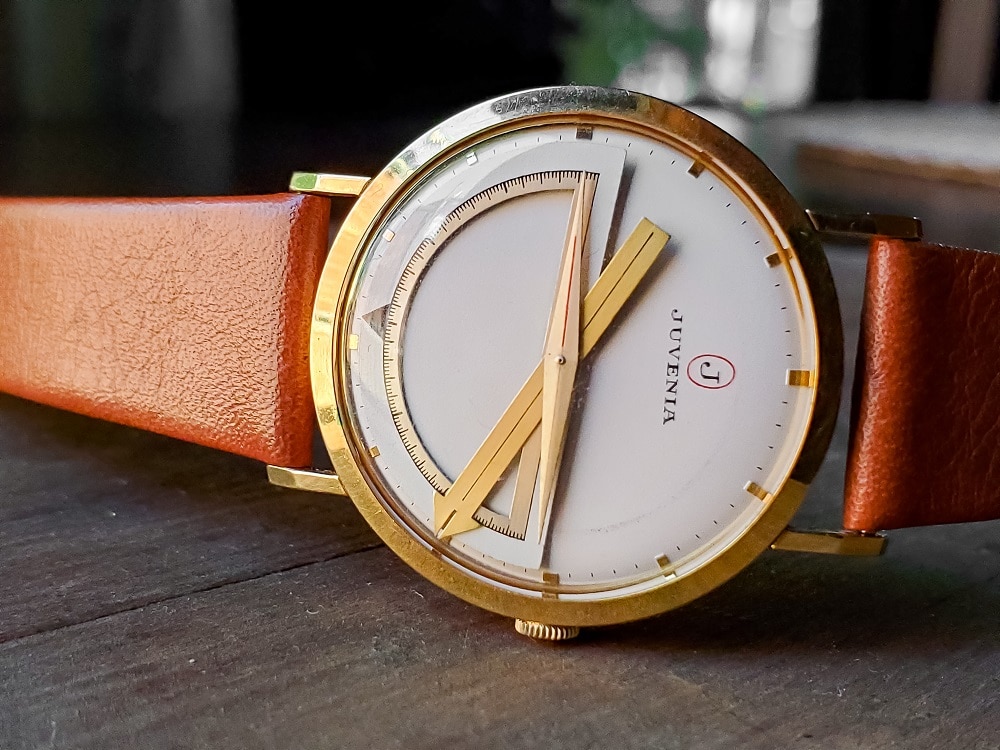
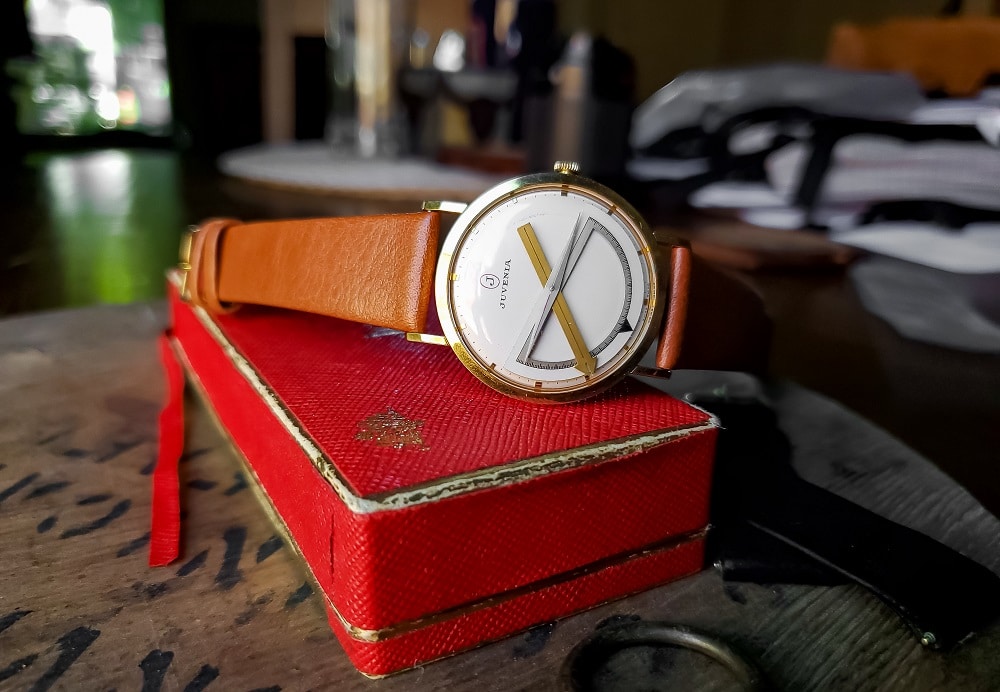
With a protractor and ruler for hands, the novelty of incorporating found objects into a time-telling engineer theme would be, at most, “quirky” by today’s standards. But it’s difficult to imagine how the Sextant would have been received eighty years ago. We’re looking at “outlandish” horology of yesteryear with senses deadened by the rainbow Daytonas of today, so perspective is key here. This in mind, you can’t get much more character out of a watch with a 33mm gold case.
It’s this “restrained cool” that’s made the Sextant a popular model with Juvenia, a brand best known for pushing the envelope with Avant Garde designs often associated with measurement instruments. Fun fact: They were the first company to release a calculator watch, the Arithmo.
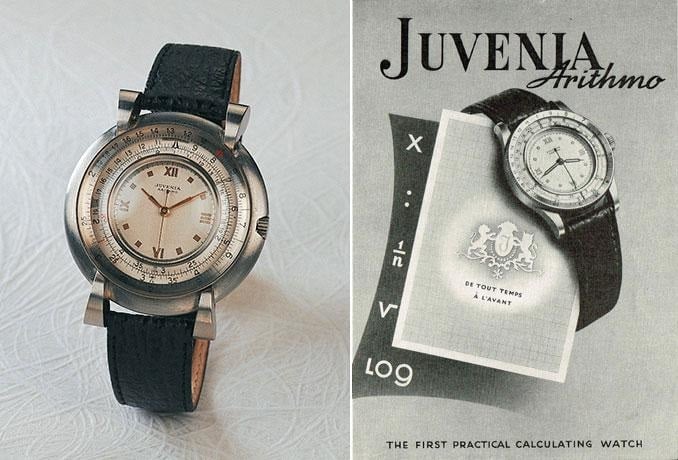
Nitty Gritty:
- Year: 1960 (produced as early as 1940)
- Size: 33mm
- Case: gold-plated steel
- Movement: manual wind 17J (cal. 612)
The Case
The biggest hang-up for many would be the width across the case… 33mm. If you think this is small, consider the ladies’ version, which measures 20mm. Just for comparison, Hamilton was producing field watches for the military with the same dimensions of 33mm as late as 1988. This particular model is gold plated (20 microns), however steel versions were also available at the time in less numbers. The crown is signed “J.” Thickness-wise, it measures 9mm with the plastic crystal. The lug to lug length is 40mm, while the strap width is 18mm. At the very least, your strap options shouldn’t be too limited.
The Dial
The years have turned the dial of this particular example to an egg shell white. The “J” emblem sits at the twelve with “Juvenia” below. Gold applied markers denote five-minute intervals at the outer edges of the dial. The index at the 30-minute mark is flanked by two “Swiss” scripts.
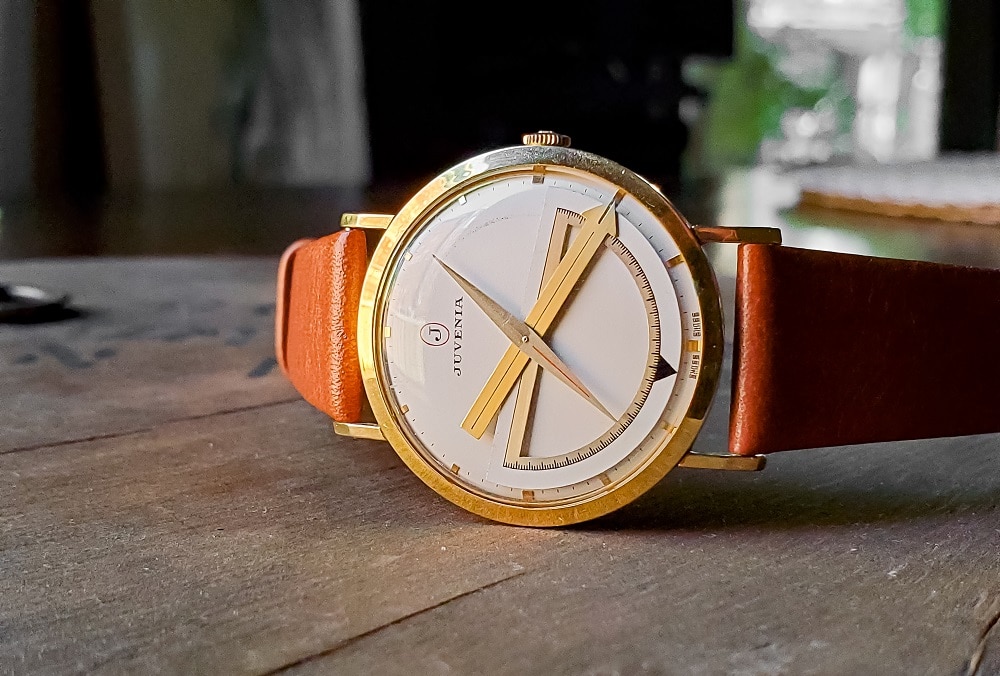
The Hands
As you’d expect, the characteristics from which the name “Sextant” is derived absorbs all of the attention. An actual sextant is an instrument used to measure angular distances between objects using key components of a graduated arc (60 degrees) with a sighting mechanism. For you etymology nerds, “sex”-tant is derived from the Latin root associated with “six”-ty. The tool’s ability to measure vertical heights in relationship to distance was particularly useful for navigation.
That said, the hands are very minimalist renderings as key parts of the tool. In place of an hour hand, there’s a white protractor with gray accents and black indices (the arc) which help to give it shape against the light backdrop. The gold plated minute hand is represented by an arrow, interpreted as the direction of angle or ruler. Last, the silver dauphine seconds hand spans the entire dial (think “compass needle”). The legibility definitely takes some time getting used to, but I was able to conquer the curve by the day’s end.
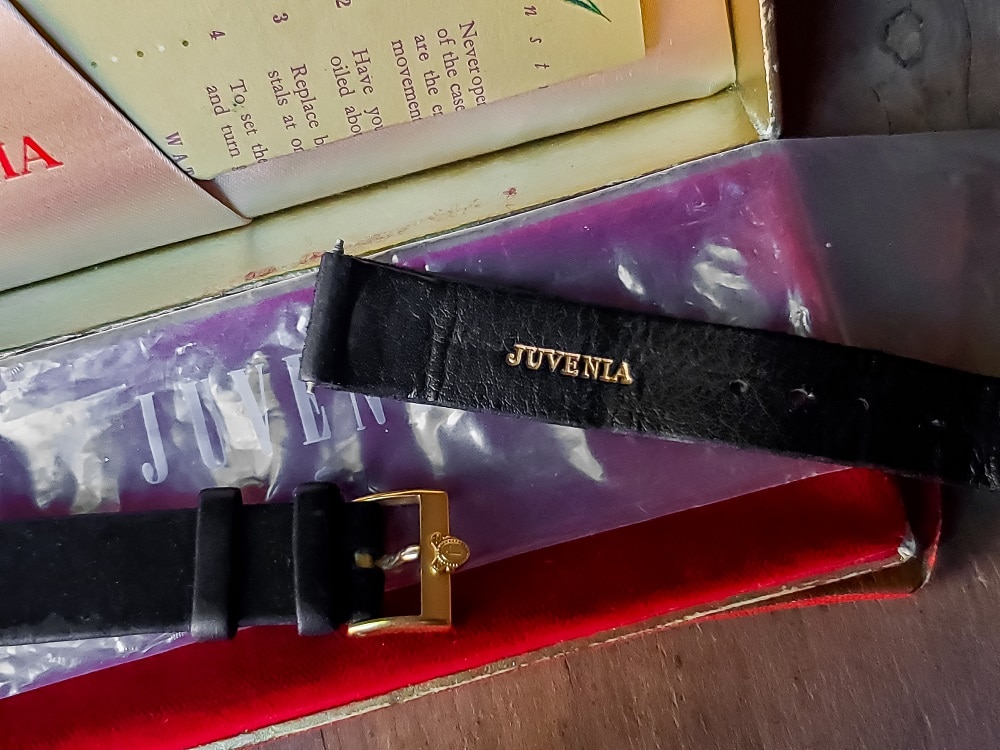
The Strap
Originally, this watch came with a black leather strap with an almost velvet texture (maybe due to the decay overtime?). The case paired with gold-plated tang buckle signed with an ornate “J.” I’ve opted for a cheap brown leather alternative that works well with the aged appearance.
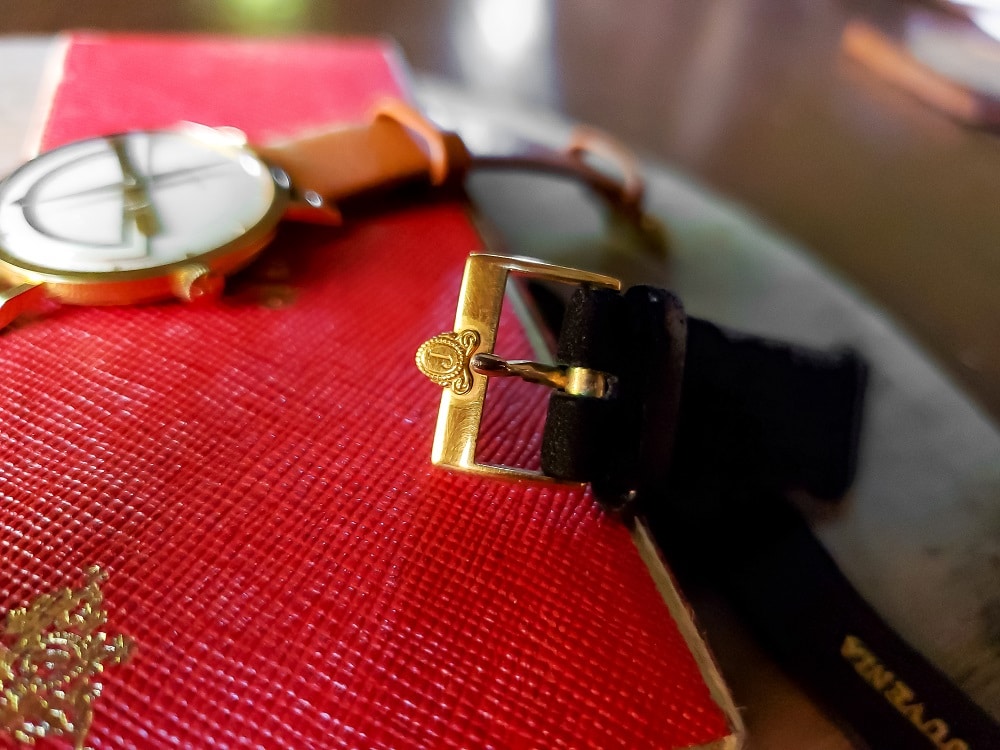
The Movement: Juvenia calibre 612 (base ETA 2390)
This ETA base historically allows for 47 hours of continuous operation however I’ll admit that I haven’t yet put this to the test.
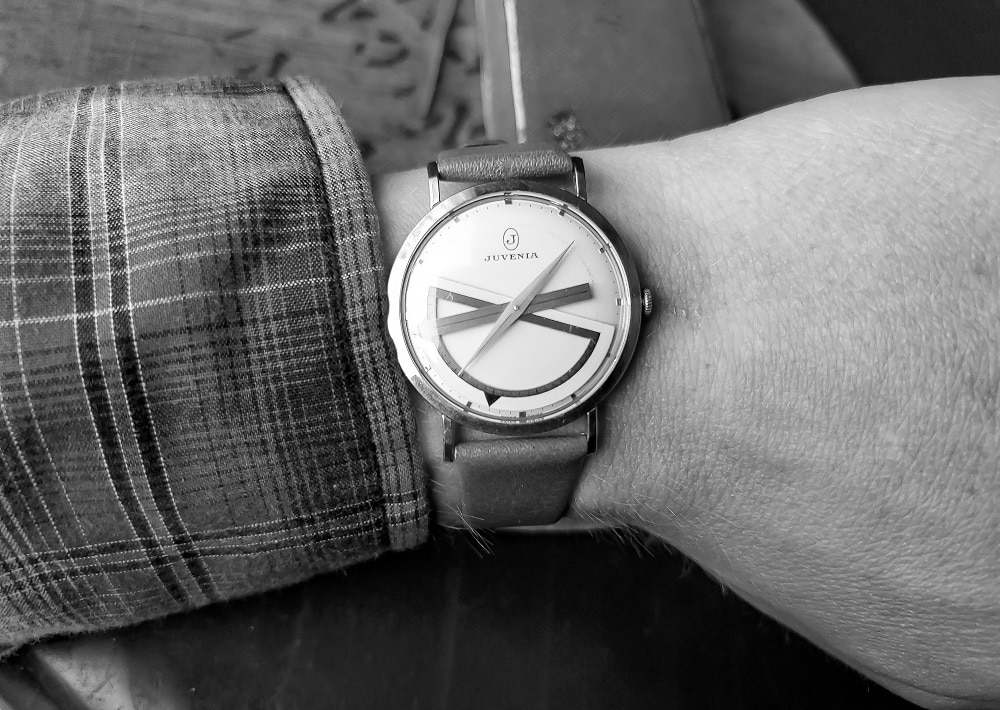
The Sextant continues to be produced today, but has been upgraded to a size of 40mm (along with an updated price tag of $4,200 msrp). Acquiring the early predecessors can prove a bit of a challenge. You can thank Esquire magazine and Johnny Depp’s taste for that one. In general, Juvenia is Swiss brand you’ll never likely hear about. This is partially because they never recovered from the rise of quartz, but mostly due to the fact that ownership switched to Asia Commercial Holdings Ltd, a Hong Kong-based jewelry conglomerate with absolutely zero interest in marketing toward the United States. Though they own several entities, Juvenia is placed at the top of their pyramid just as Omega would be the top tier of Swatch. Many of their watch models have been reproduced over decades (to include the updated versions of the Sextant and Planet).
In the wake of WW2, watches were often seen and designed as utilitarian. Tastes were conservative and designs lack a lot to be desired by today’s standards. By contrast, Juvenia sought to establish themselves as the company known for their “statement pieces.” Their catalogs of the thirties included abstract table clocks and watch rings, often featuring heavy enamel detailing.
Juvenia is often an unaccredited trend setter for styles that would later be appropriated by Longines and Hamilton, including their mystery dial watch released in 1947, fifteen years before the trends became in vogue. For fans of Raketa, their website will tell you their 80’s release of the Copernicus’ design is, “entirely inspired by Copernic’s theory of the universe.” However, a strong argument could be made that the design looks suspiciously similar to the Juvenia “Planet” released in 1950.
At the time of the Sextant’s mass release in 1960, design was already beginning to push the envelope with Hamilton’s Ventura and other asymmetrical cases akin to something you’d see from the Jetsons. This came with the advent of the jet engine which infiltrated everything from vacuum cleaners to vehicle tail lights. While these were marketed toward a certain group of trendy demographics, they were never the majority of the brand’s image. Juvenia, on the other hand, worked to cultivate a niche of abstract visual elements since the 1920’s that had separated them from the rest of the Swiss brands as the guys that were “out there.” It’s probable that their creativity came at the cost of mass appeal, which is a shame, because their oddities of the past are what make independent guys like MB&F so remarkable today.
Went on a bit of a tangent there. My point is that if Mark Whalberg can wear a watch slapped with rainbow diamonds, believe that you can rock a 33mm watch with some inherent command presence.
#riseabove

Damon is based out of the Bay Area, where he’s a black sheep among Apple Watch loyalists. Having served as a Combat Engineer with the USMC, he believes a true field watch’s success is measured by how closely it compares to a “G-Shock.” Nonsensically, a background in design has guided his preference toward higher craft, as he struggles to become the lifestyle his watch tastes more closely reflect.
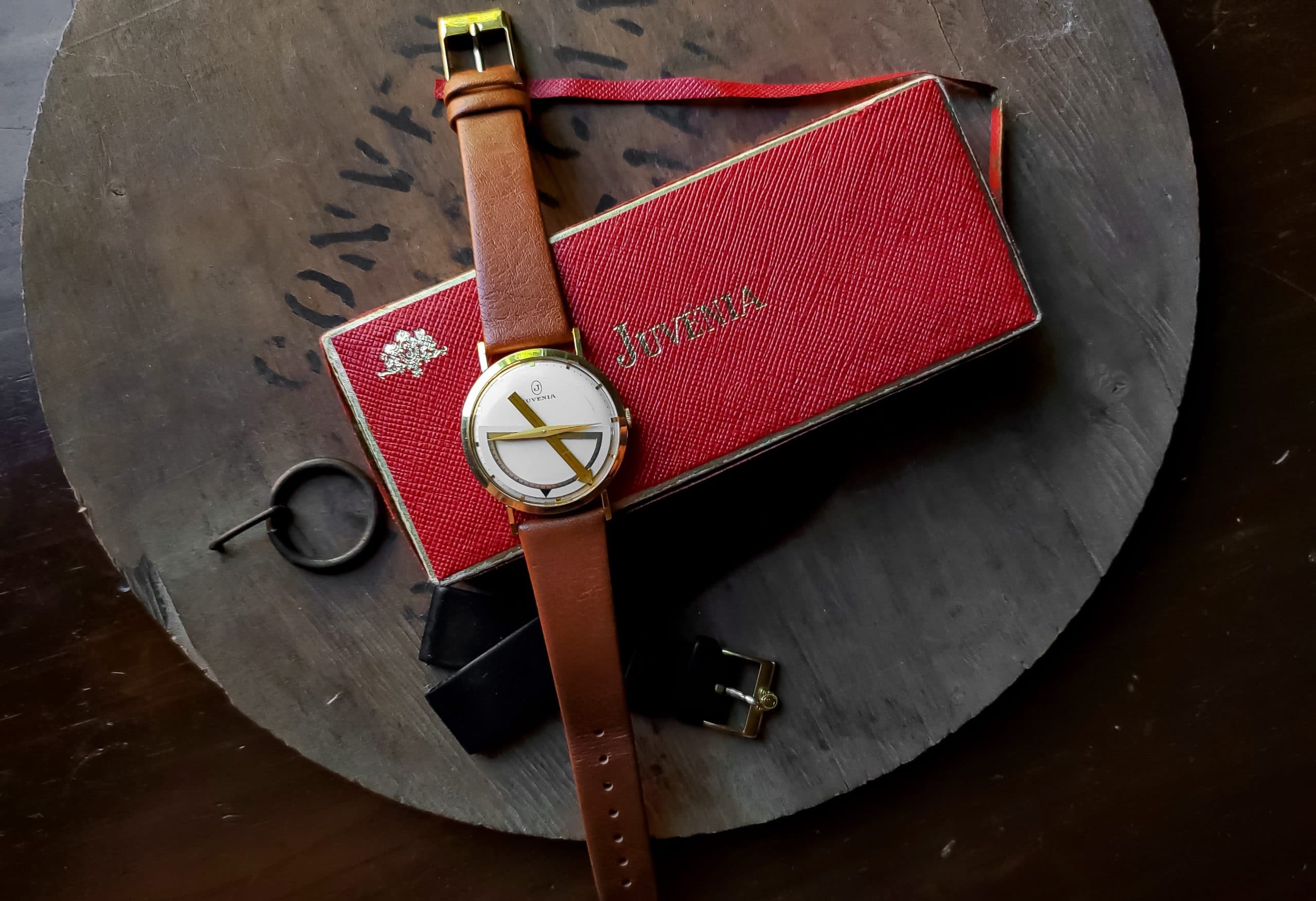

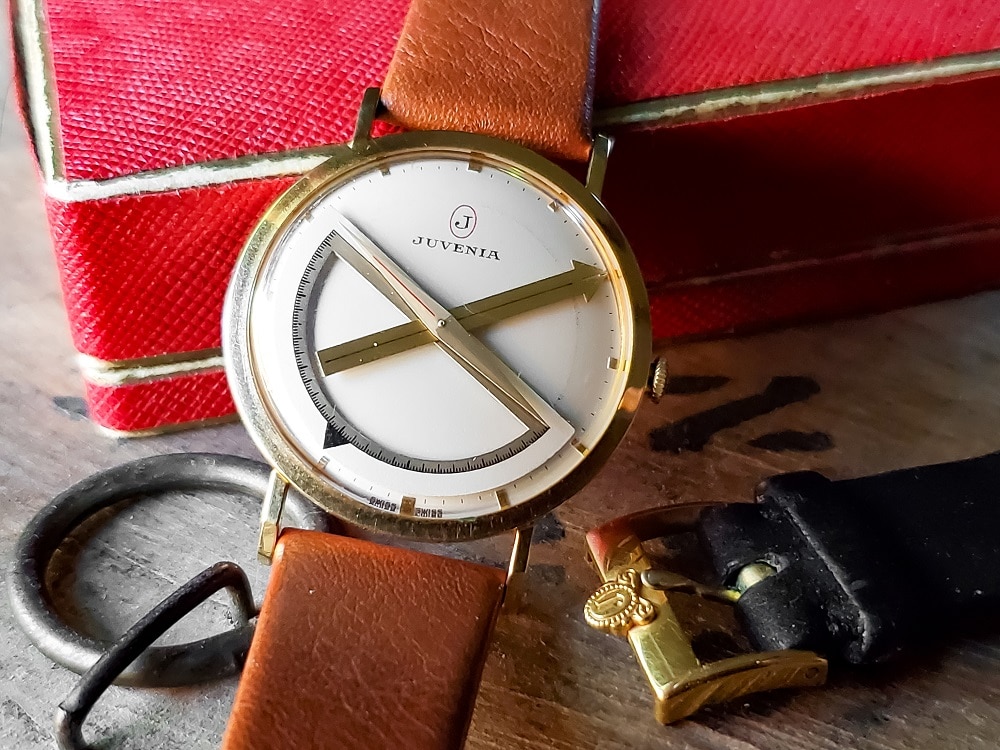
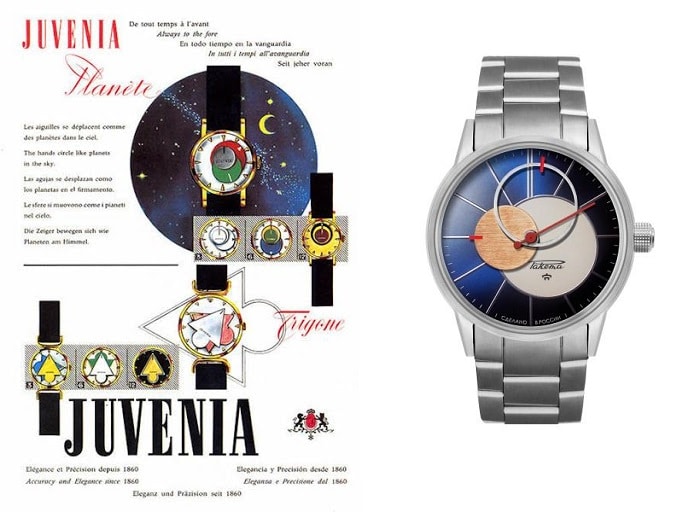
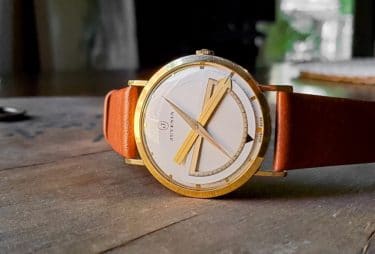
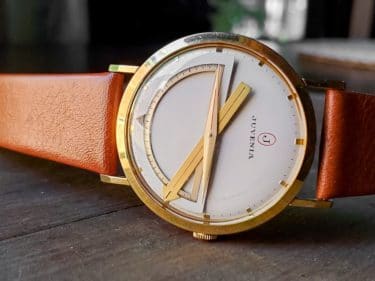
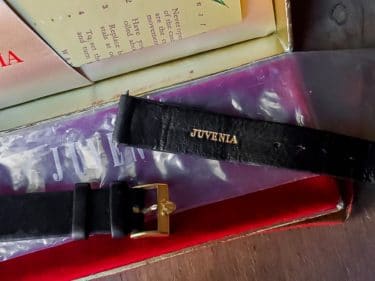
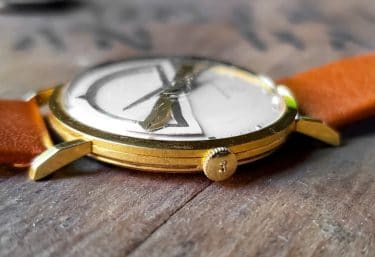
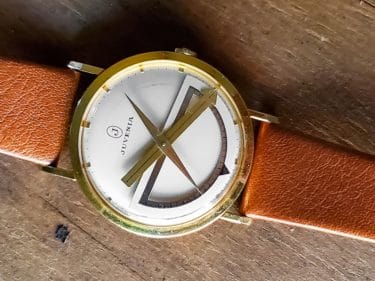
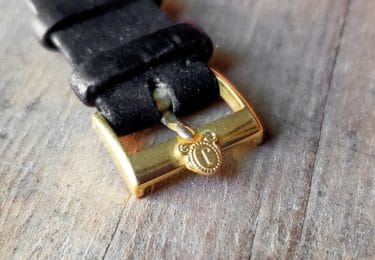
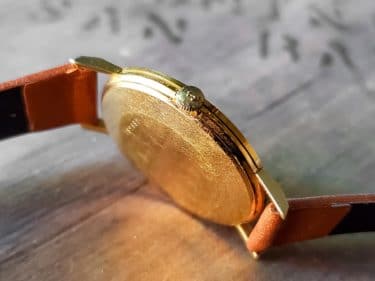

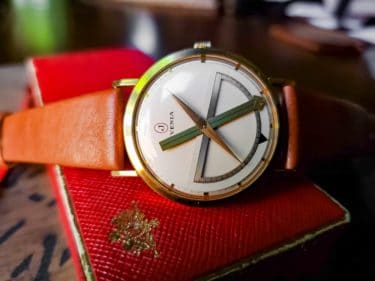
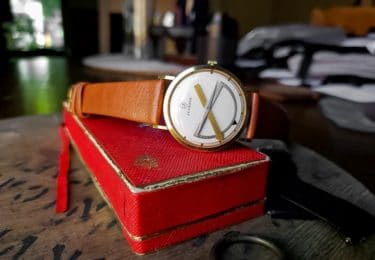
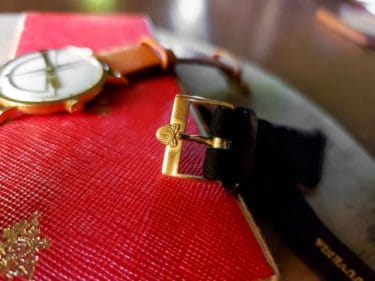
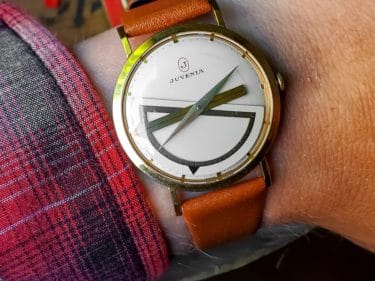
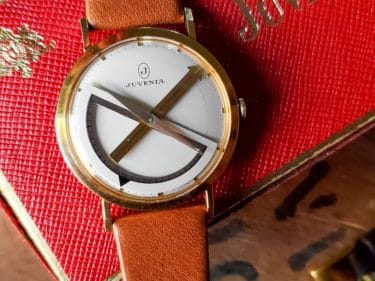
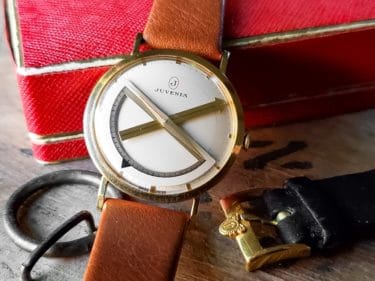
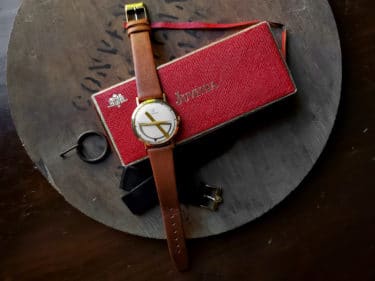
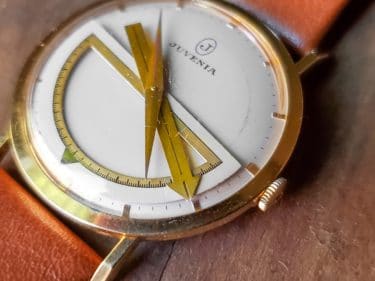
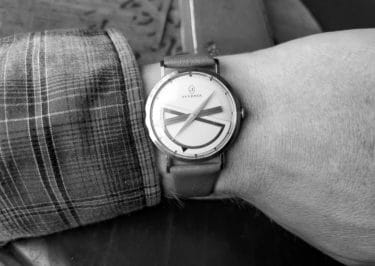
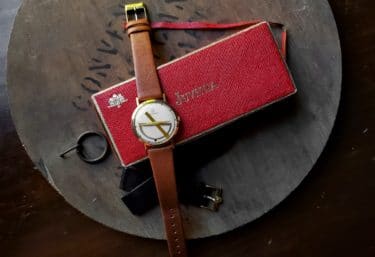
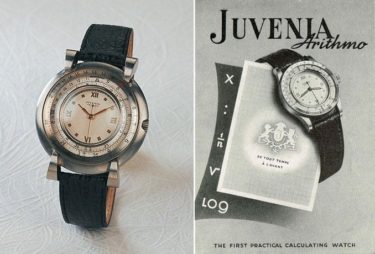
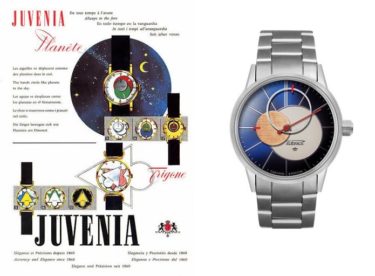
I’m glad I read about this watch first thing in the morning. (Imagine the horological dreams I would have had if I had read it late last night.) Truly, that is a unique piece that I had no knowledge of. Thanks for the review, really different and interesting!
I have a family heirloom that was left to me from my great-grandfather which is the same exact watch 1961 I believe model number 612 the watch is currently in I would say anywhere from fair to good condition for how old it is and it’s a very rare watch and right now times is hard been going through some rough times and was actually looking forward to maybe getting rid of it finding a good home for it and was looking for a few pointers